The Samsung 850 EVO 4TB SSD Review
by Billy Tallis on July 11, 2016 10:00 AM ESTAnandTech Storage Bench - The Destroyer
The Destroyer is an extremely long test replicating the access patterns of very IO-intensive desktop usage. A detailed breakdown can be found in this article. Like real-world usage and unlike our Iometer tests, the drives do get the occasional break that allows for some background garbage collection and flushing caches, but those idle times are limited to 25ms so that it doesn't take all week to run the test.
We quantify performance on this test by reporting the drive's average data throughput, a few data points about its latency, and the total energy used by the drive over the course of the test.
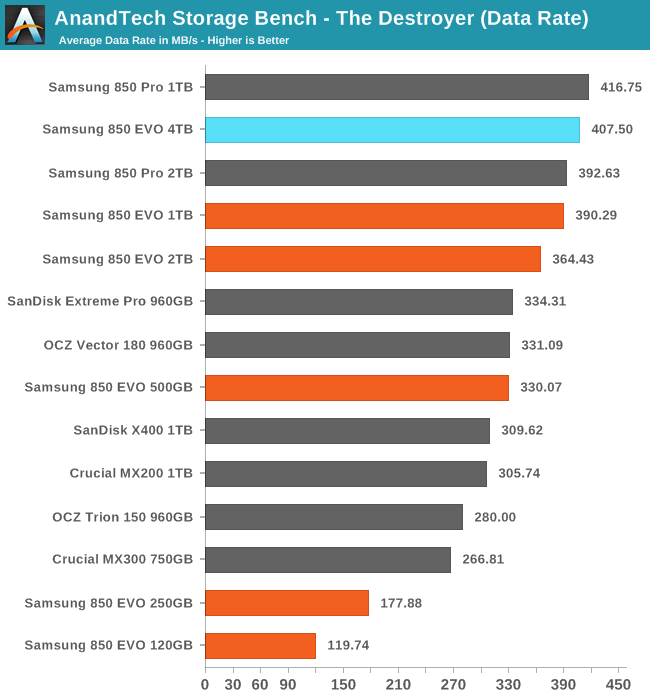
The Destroyer isn't enough to really challenge the 4TB 850 EVO, as this test doesn't write enough data to fill the drive even halfway. The 1TB 850 Pro still holds the record for the highest average data rate maintained by a SATA drive, but the 4TB EVO is closer to that than to any slower drive.
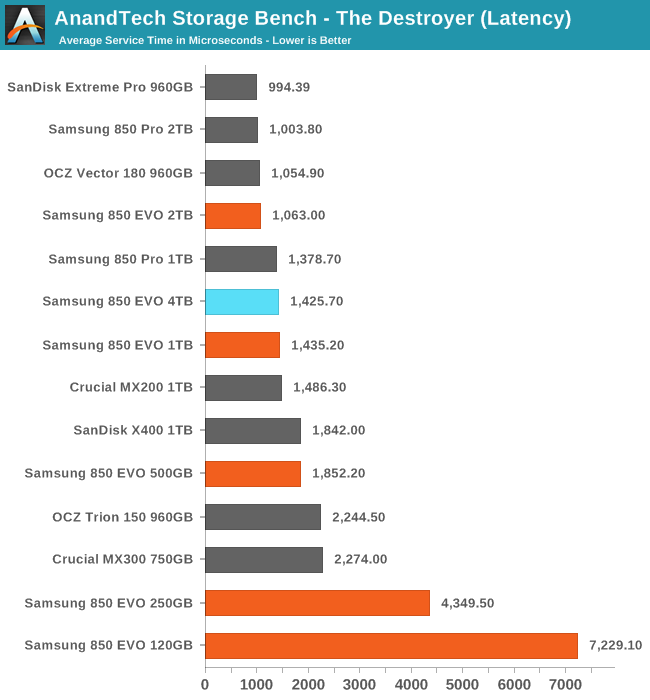
After the 2TB 850 Pro and EVO managed to tie with the top tier of drives for average service time, it is a little disappointing to see the 4TB 850 EVO only manages to match the 1TB models, but that's still high-end performance.
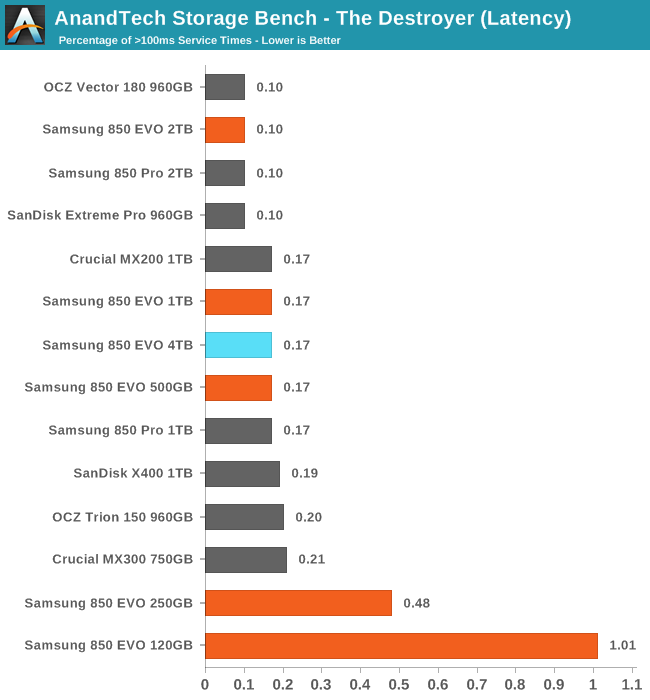
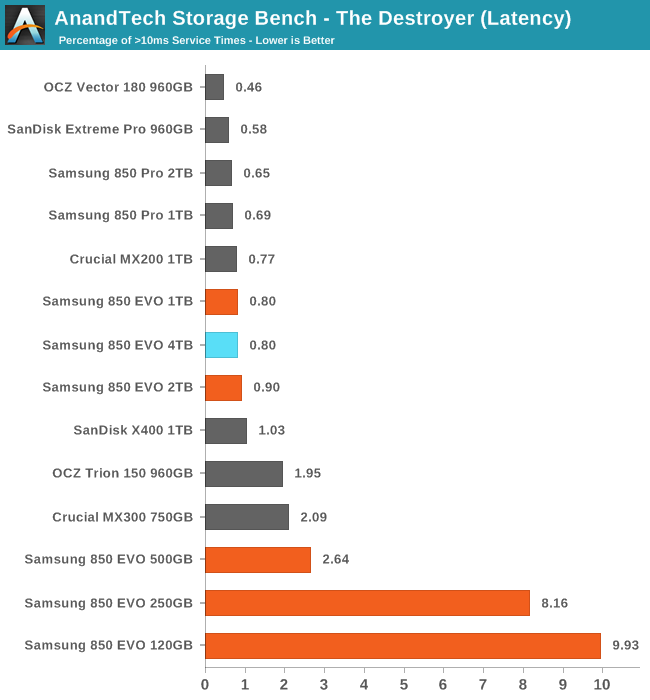
The 4TB 850 EVO has slightly more extreme latency outliers than the 2TB 850s, but at the more strict threshold of 10ms it is tied with the 1TB 850 EVO for being the best TLC drive.
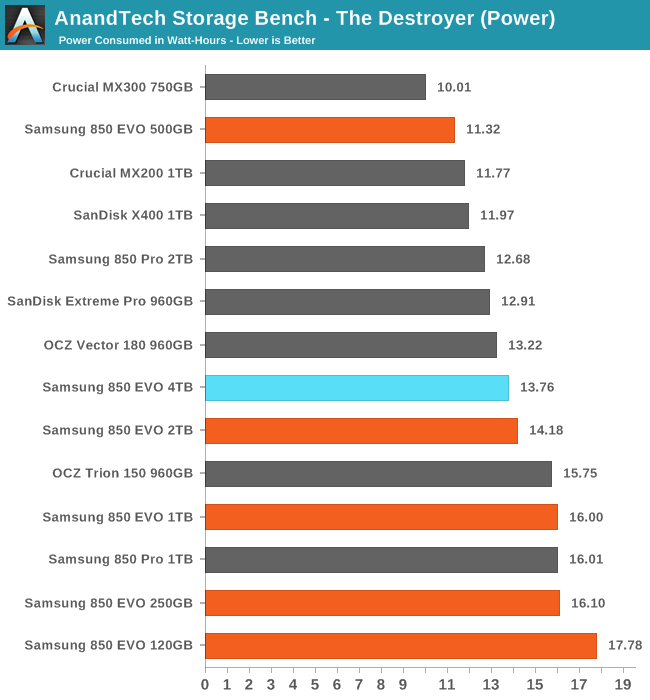
The 4TB 850 EVO brings a little more reduction in power use over the 2TB 850 EVO, which substantially cut power use relative to the 1TB model. The 4TB drive is clearly not paying any significant penalty for keeping so much flash and DRAM powered up.










145 Comments
View All Comments
Lolimaster - Tuesday, July 12, 2016 - link
If you "work" with 4k raw videos you can afford the enterprise level SSD's with their multi petabyte endurance rating.mapesdhs - Wednesday, July 13, 2016 - link
Exactly. I know someone who's been testing 8K editing at a movie company, he was able to get over 8GB/sec from a good Enterprise PCIe device, with consistent performance being absolutely critical. He did try RAIDs of 850 Pros but they just couldn't handle it.AnnonymousCoward - Monday, July 11, 2016 - link
Look at the graph on this page...the Samsung showed bad sectors 4 times earlier than the others: http://techreport.com/review/27909/the-ssd-enduran...3 things matter to me with SSDs: cost, reliability, and UX performance.
DPUser - Monday, July 11, 2016 - link
That was 2-D TLC. The 850 uses much more robust 3-D NAND.AnnonymousCoward - Tuesday, July 12, 2016 - link
I guess we need updated data then :)ddriver - Monday, July 11, 2016 - link
Well, that's the 840 pro - old stuff... Also, it is possible that samsung have more strict criteria of when a sector becomes unreliable and requires reallocation.Palorim12 - Tuesday, July 12, 2016 - link
But in the end, didn't the 840 Pro outlast all the other drives?hojnikb - Monday, July 11, 2016 - link
That endurance rating is simply for segmentation purposes. In reality, drive should easily reach 4PB+ of writes, before crapping out.mdw9604 - Tuesday, July 12, 2016 - link
Can you explain? I'd like to buy one for a project I am working on, if this is true.mdw9604 - Tuesday, July 12, 2016 - link
I agree. I know its EVO...but write endurance on a drive that expensive is pretty bad.